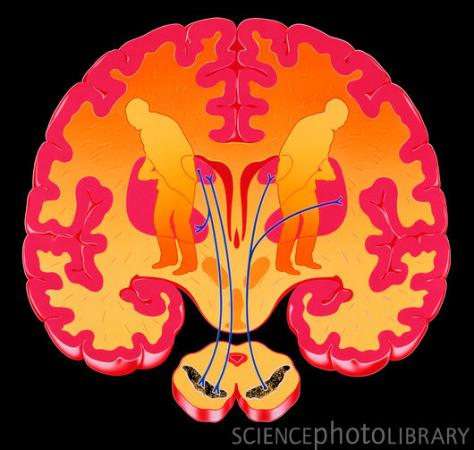据美国物理学家组织网8月23日报道,英国科学家们从一名患有一种罕见帕金森氏症的患者身上提取了皮肤样本,随后用这些皮肤细胞首次制造出了干细胞,这些干细胞随后发育成受该疾病影响的脑神经细胞。最新研究使科学家能在实验室为这种症状建模,以厘清为什么某些神经细胞会凋亡,从而更好地测试新药的疗效。

该研究由爱丁堡大学和伦敦大学学院的科学家进行,慈善团体英国帕金森病协会为其提供了30万英镑的资助,研究发表在《自然·通讯》杂志上。科学家们希望最终找到能阻止这些关键的神经细胞凋亡的药物。这些细胞凋亡会使人罹患帕金森氏症。
爱丁堡大学再生医学研究中心的提洛·库拉斯表示:“现有的治疗帕金森氏症的药物能缓解症状。用帕金森氏症患者的神经细胞在实验室器皿中为这种疾病建立模型使我们能测试有望终止或逆转症状的药物。”
这种帕金森氏症恶化得非常快,而且患者多为30岁出头,罹患这种帕金森氏症的病患生成a-突触核蛋白的基因是普通人的两倍。尽管这种疾病比较罕见,但与之有关的这种蛋白却与所有形式的帕金森氏症有关。“理解这种形式的帕金森氏症能让我们管窥不同形式的帕金森氏症。”伦敦大学学院神经学研究所的迈克尔·德瓦恩表示。
生物探索推荐英文论文摘要:
Parkinson's disease induced pluripotent stem cells with triplication of the α-synuclein locus
A major barrier to research on Parkinson's disease is inaccessibility of diseased tissue for study. One solution is to derive induced pluripotent stem cells from patients and differentiate them into neurons affected by disease. Triplication of SNCA, encoding α-synuclein, causes a fully penetrant, aggressive form of Parkinson's disease with dementia. α-Synuclein dysfunction is the critical pathogenic event in Parkinson's disease, multiple system atrophy and dementia with Lewy bodies. Here we produce multiple induced pluripotent stem cell lines from an SNCA triplication patient and an unaffected first-degree relative. When these cells are differentiated into midbrain dopaminergic neurons, those from the patient produce double the amount of α-synuclein protein as neurons from the unaffected relative, precisely recapitulating the cause of Parkinson's disease in these individuals. This model represents a new experimental system to identify compounds that reduce levels of α-synuclein, and to investigate the mechanistic basis of neurodegeneration caused by α-synuclein dysfunction.
生物探索推荐全文阅读:







